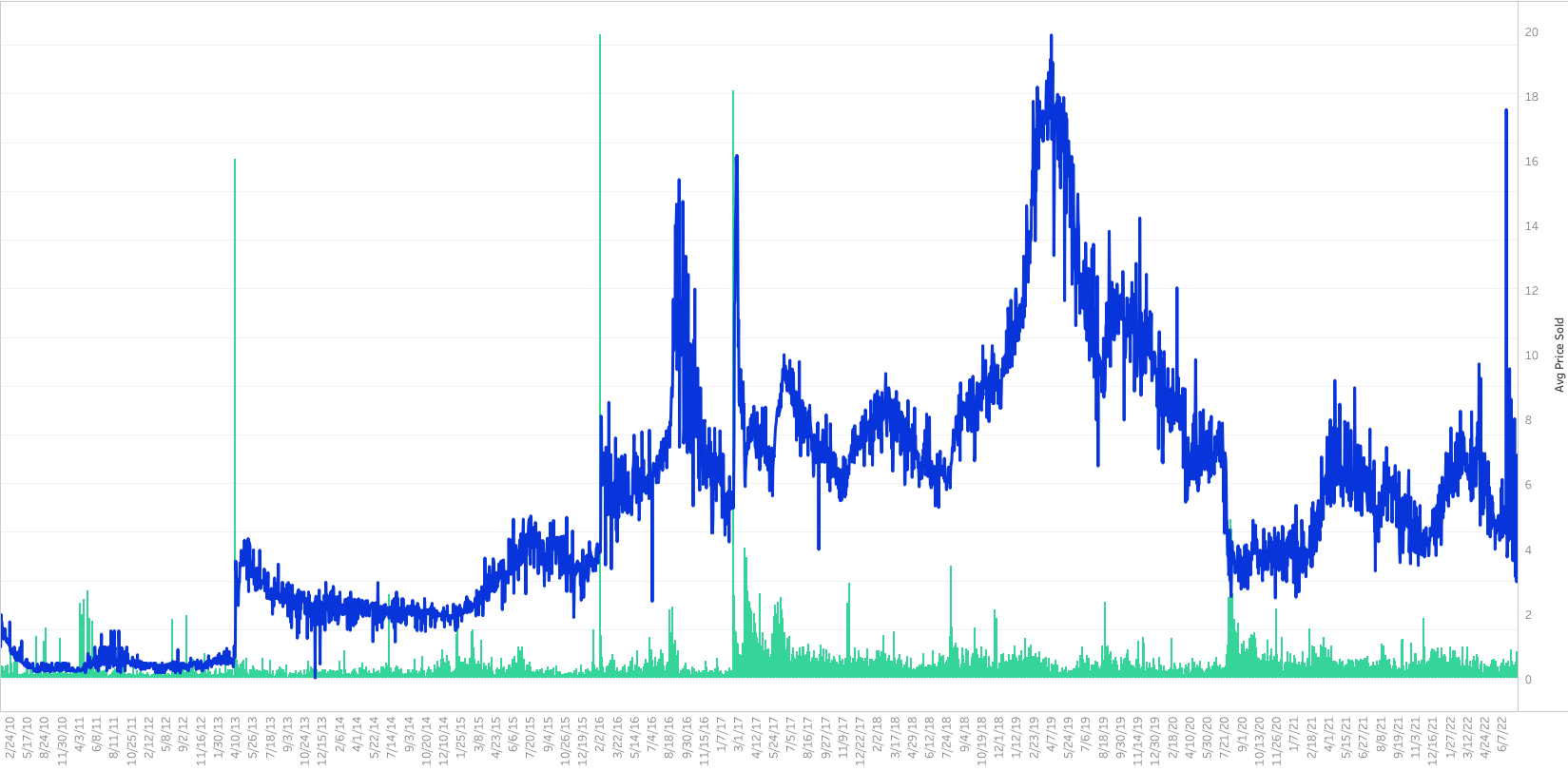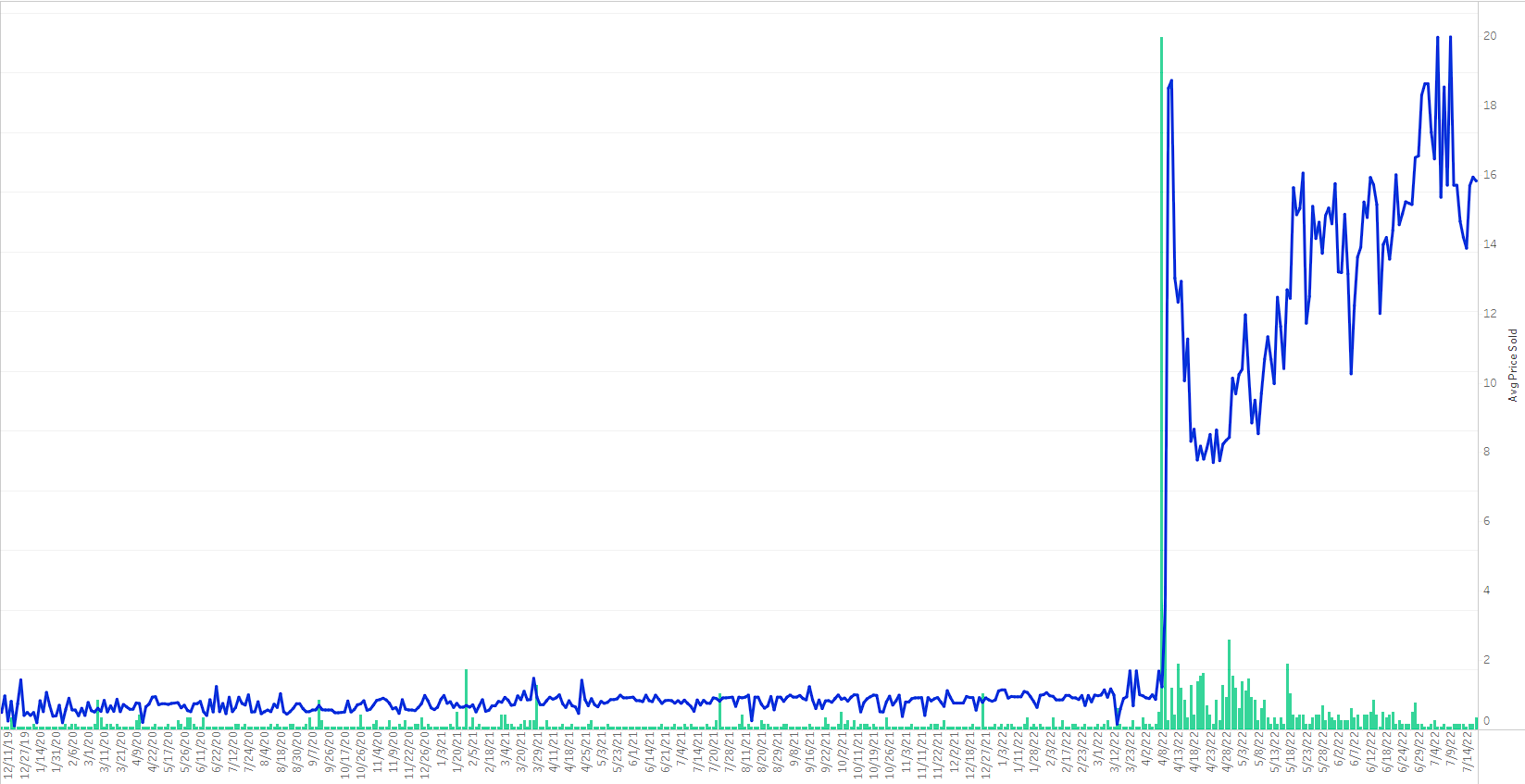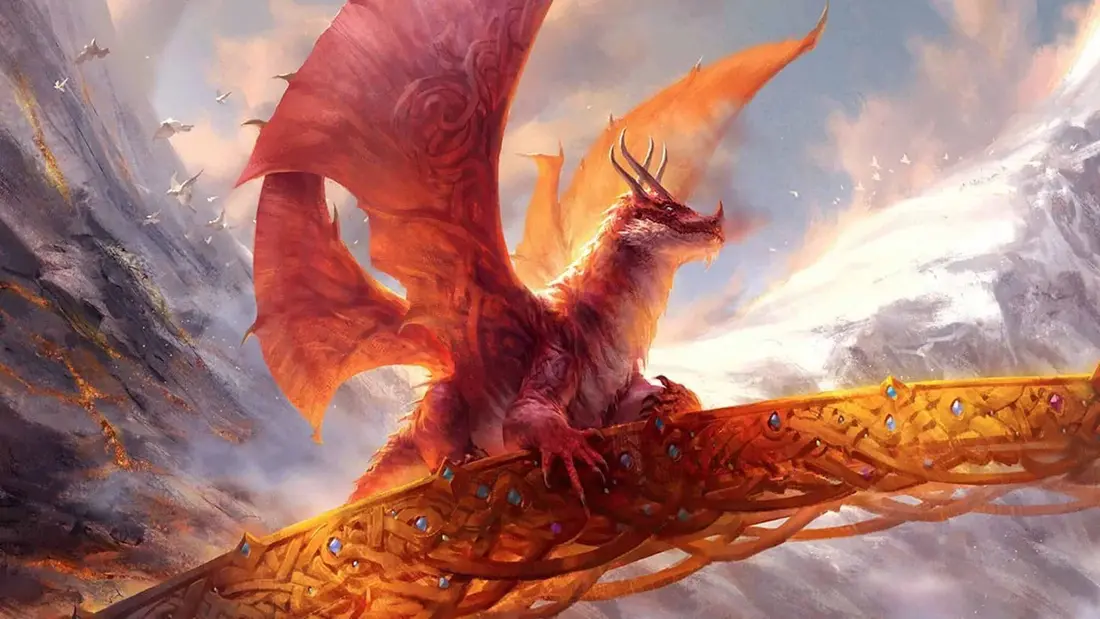Keep an eye on synergy for these specs!
Quick — what makes a Magic card good?
When I ask people this question, I usually get some variation of, “its power level is very high for its mana cost.” This answer might be overly simple, but I also think it’s more or less correct. This is why cards like the Evoke Elemental cycle from Modern Horizons 2 have taken over Modern, why Force of Will and Black Lotus have dominated Vintage since the beginning, and why so many decks are full of one and two-drop creatures and spells. In Magic, you generally want to do as many powerful things as quickly as you can. It’s all about the cost/benefit ratio of power level to resource allocation.
/162150.jpg)
Market Price: $24.20
/198356.jpg)
Market Price: $13.29
/221779.jpg)
Market Price: $11.82
Generally, the cards with the highest raw power level will make themselves known early on. Tarmogoyf, Thragtusk, Siege Rhino, Teferi, Hero of Dominaria, Oko, Thief of Crowns, Omnath, Locus of Creation…all of these cards dominated straight out of the gate, warping Standard around them as soon as they were printed. These cards were a step above most of the other cards in their respective Standard environments, and all of them were quite pricey in their day. This is typically how we measure play value: raw, unadulterated power in a given format.
I spend a lot of time looking for these cards in my set reviews, because it’s the best, easiest way to make money. For example, Ledger Shredder began life as a bulk rare. Its incredible power level revealed itself shortly after, and it’s now a powerhouse in several different formats. I can’t imagine it’ll be cheap again for a long, long time.
Unfortunately, it’s nearly impossible for an older card to suddenly become super powerful and under-costed. How could it? Elite cards are usually discovered immediately, finding a home in their chosen format within weeks, if not days. I’m sure I could find a couple of historical examples where the entire competitive Magic community missed how good a card was for months after it was printed, but those situations were rare in the past, and they’re basically non-existent in the Arena era. In Magic, cream tends to rise to the top, and it usually happens fast.
So why is it that older cards sometimes come out of absolute obscurity, or at least the bulk rare box, to end up dominating in Modern, Pioneer, or at the Commander table? It’s all about context.

This is the price chart for Death’s Shadow over the past twelve (yes, twelve!) years. As you can see, it has had many, many ups and downs, based mostly on reprints and metagame share. Initially, however, it was a bulk rare. There was a little excitement for it when it came out, but that petered out pretty quickly. It then started seeing a little fringe play with Gitaxian Probe and Angel’s Grace, but that deck didn’t perform all that well outside of goldfish mode, and it was nowhere near Modern’s top tables.
/218843.jpg)
/39521.jpg)
/233724.jpg)
Then Temur Battle Rage was printed, and suddenly Death’s Shadow had become the namesake staple in a tier one Modern deck. It went from totally useless, to fringe player, to the absolute top of the format. All it took was for WotC to print a brand-new card that could act as the peanut butter to Death’s Shadow’s jelly.
There are tens of thousands of unique Magic cards out there, with hundreds more printed each year. While some cards just have an innately high power level, and others have an innately low power level, some cards have a purely contextual power level. With the right support, Death’s Shadow is one of the best cards ever printed. With the wrong support, it’s a bulk rare.
I can’t remember who coined the term “combulk,” but I know I’ve been using it since at least 2015, if not earlier. It’s a portmanteau of “combo” and “bulk,” and I use it to refer to combo pieces that are languishing at or near bulk rare prices. While some of these cards have seen niche play here and there — think Death’s Shadow before Temur Battle Rage and Become Immense — most of then haven’t sniffed a battlefield outside of the most casual kitchen table Commander decks. The difference between these cards and other bulk rares, though, is that combulk cards have the potential to become incredibly powerful in the right context. They’re just waiting for the perfect card to be printed, and bam — now everyone needs a copy.
Why Think About Combulk at All?
Last week, I wrote a lengthy article about long-term speculation on cheap rares. I don’t want to repeat myself too much here, but the thing I love most about it is that it’s low-risk, high-reward. If you’re buying cards at bulk or near-bulk prices, you should be able to eventually buylist everything that doesn’t hit for close to what you paid in the first place. This sort of speculation is also accessible to folks on all sorts of budgets, since most of the cards you’re buying are less than a dollar in the first place.
While combulk rarely makes a competitive splash these days, and cards like Death’s Shadow are the exception rather than the rule, WotC’s focus on Commander in recent years has made combulk speculation more lucrative than ever before. The Beamtown Bullies is a great example of this. Once it’s on the battlefield, The Beamtown Bullies allows you to place a nonlegendary creature card from your graveyard onto the battlefield under an opponent’s control, with haste and goaded. This means that you want to fill your deck with creatures that have a massive drawback when they enter the battlefield under your control or attack. Leveler, Eater of Days, Hellcarver Demon, and Bronze Bombshell all fit the bill, despite the fact that these cards saw little to no play prior to The Beamtown Bullies being printed.
Here’s the price chart for Hellcarver Demon:

And here’s Bronze Bombshell:

These aren’t new cards. Bronze Bombshell was printed in 2006, and Hellcarver Demon was printed in 2010. Each of them had plenty of chances to take off, but they couldn’t do all that much without an enabler in the exact mold of The Beamtown Bullies. Once that card was printed, though? Well, the price charts tell the story by themselves.
This is why I like combulk so much. The buy-in is cheap, and the payout can be amazing. If you know what to look for, cards like this can pay off in some truly incredible ways.
How To Identify Top Tier Combulk
Obviously, not every combo card is going to eventually find a home. Just as some creatures and removal spells are underpowered outside of limited, the same is true with some combo pieces. Other combo pieces make poor investments for other reasons. Here’s what I tend to think about when I’m trawling the visual spoilers for top tier combulk:
How scarce is it? Part of the reason why Hellcarver Demon and Bronze Bombshell ended up spiking so hard is that they have only ever been printed once, and those sets are twelve and sixteen years old, respectively. The lower the print run, and the older the card is, the better your investment will pay off if it hits. Mythics are better than rares, cards that have never been reprinted are better than cards that have, and cards from older sets or sets with low print runs (like Commander deck exclusives) are better than cards from newer sets with heavier print runs.
How contextually powerful is it? Think about a card like Sanguine Bond, which was worth quite a lot before it was reprinted to death. An effect like “Whenever you gain life, target opponent loses that much life” basically makes it a must-play in any lifegain deck, and it means that the card will see a new surge in demand every time WotC prints an exciting new Commander that gains life and has black in its color identity. In fact, it’s hard to justify not running Sanguine Bond in any deck that meets those criteria.
Now think about a card like Font of Magic. It’s a bulk mythic from Battle for Baldur’s Gate that seems to mostly be a bust, but can you imagine how powerful it’ll be if WotC ever prints a spell-based Commander that’s designed to keep being played out of the command zone over and over again without a penalty? In a deck like that, Font of Magic would be a must-play. That’s why it’s an exciting piece of combulk for me.
Will the effect it provides be powerful in Commander? Commander players like big, splashy plays and effects that have a tremendous amount of potential upside. Getting to possibly play every spell in your deck is exciting, even if it rarely pays off. Getting to put a couple of +1/+1 counters on a creature, or remove a couple of opposing creatures from play? Not as exciting for the folks who are going to be building these decks. What you want to look for are cards that people can dream on.
How niche is the card’s effect? The older a card is, the more chances it has had to pay off. Cards from this era that combo with common effects that have been printed over and over again (lifegain, counters, blink effects, etc.) would have spiked by now if it was ever going to happen. When you’re looking at older cards especially, you want to find the extreme corner cases. That’s where the untapped potential lies, if you’re patient enough.
Be Patient, Then Be Aggressive…
Most combulk speculation is not a short-term proposition. Cards can take years, even over a decade, to pay off. If you’re going to get into this, you have to be prepared to have a lot of capital tied up in some pretty unexciting spec buys for quite some time. If you’re extremely limited in your speculation funds, this isn’t the place to look for quick cash. You want to be in a position where you can store these cards in a box for years without having to worry about them. If you check the price charts every couple of weeks, this kind of speculation will drive you mad.
That said, don’t hesitate to sell as soon as your card starts to pay off. With cards like these, the price rarely spikes past the initial hype period. You want to be selling all your copies as soon as the hot new Commander is previewed, and everyone is dreaming about how amazing the combo will be in their shiny new deck. You might miss out on further profits every once in a while, but by and large you will be cashing out at the top of the market this way.
…or be Quick to Act During Preview Season
If you don’t want to tie up a bunch of capital in bulk rares for years at a time, there is another option: being one of the very first people to act when a new combo piece is previewed.
This is obviously the ideal situation when it works out. You can buy a few dozen copies of a bulk rare, and then flip them for $10 each a few days later. I’m sure that almost every speculator has a story or two like this, where everything worked out perfectly and they made a ton of money simply by being in the right place at the right time with the right knowledge and luck.
Of course, it can be difficult to be in the right place at the right time with the right knowledge and luck. When The Beamtown Bullies was revealed to the world, it wasn’t in an official preview, but in a leaked product image of a Commander deck box with extremely blurry writing. People then figured out what the card did (and what might combo well with it), and picked up as many copies as they could. That’s who ended up winning the biggest on these particular specs.
So, what would you have had to do to be in on that spec? Well, you’d have had to be in an active Commander community that sought out this particular leak, brought it to your attention, and discussed it. Then you’d have had to have enough knowledge of older cards to know which creatures were likely to be the best Beamtown Bullies combo pieces. Then you’d have had to immediately go onto the TCGplayer Marketplace and pick up copies before everyone else did.
I’m going to be blunt with you: this is not worth your time unless you also love Commander and want to spend a lot of time thinking about this stuff. If you have a lot of esoteric Magic knowledge already, and you already talk about Commander and combos a lot, you should be leveraging this toward successful speculation, giving extra thought to unique Commanders that your community is super excited about. If not, well, there are easier ways to make money.
“Combo” is Relative
The last thing I want to talk about is that the “combo” part of “combulk” doesn’t necessarily have to apply only to infinite combos. Honestly, in this context, it’s better to think of it more as high synergy cards, which is a term that comes from EDHREC. For example, Goldspan Dragon has high synergy with “treasures matter” decks, Training Grounds has high synergy with commanders that have activated abilities, Doubling Season has high synergy with decks that employ a high concentration of planeswalkers, etc.
/230161.jpg)
Market Price: $10.62
/495646.jpg)
/504586.jpg)
Market Price: $49.82
At this point, the Commander format has become so streamlined that nearly every card in nearly every deck has to have high synergy with its commander to see play. Other than mana rocks and a few removal or card draw spells, there’s not really any room for decks to run cards that are just generically good anymore. At the very least, that’s what I always end up cutting first, and I know many others who do the same.
Because of that, you should always be looking closely at contextually powerful cards. These are the cards driving the most popular format in Magic, and they’re the cards that are most likely to spike out nowhere. If you have a good sense of what Commander players like to do, and you can imagine just how cool a given bulk rare would be if it just had the right home, then you’re probably going to succeed doing this type of speculation.
